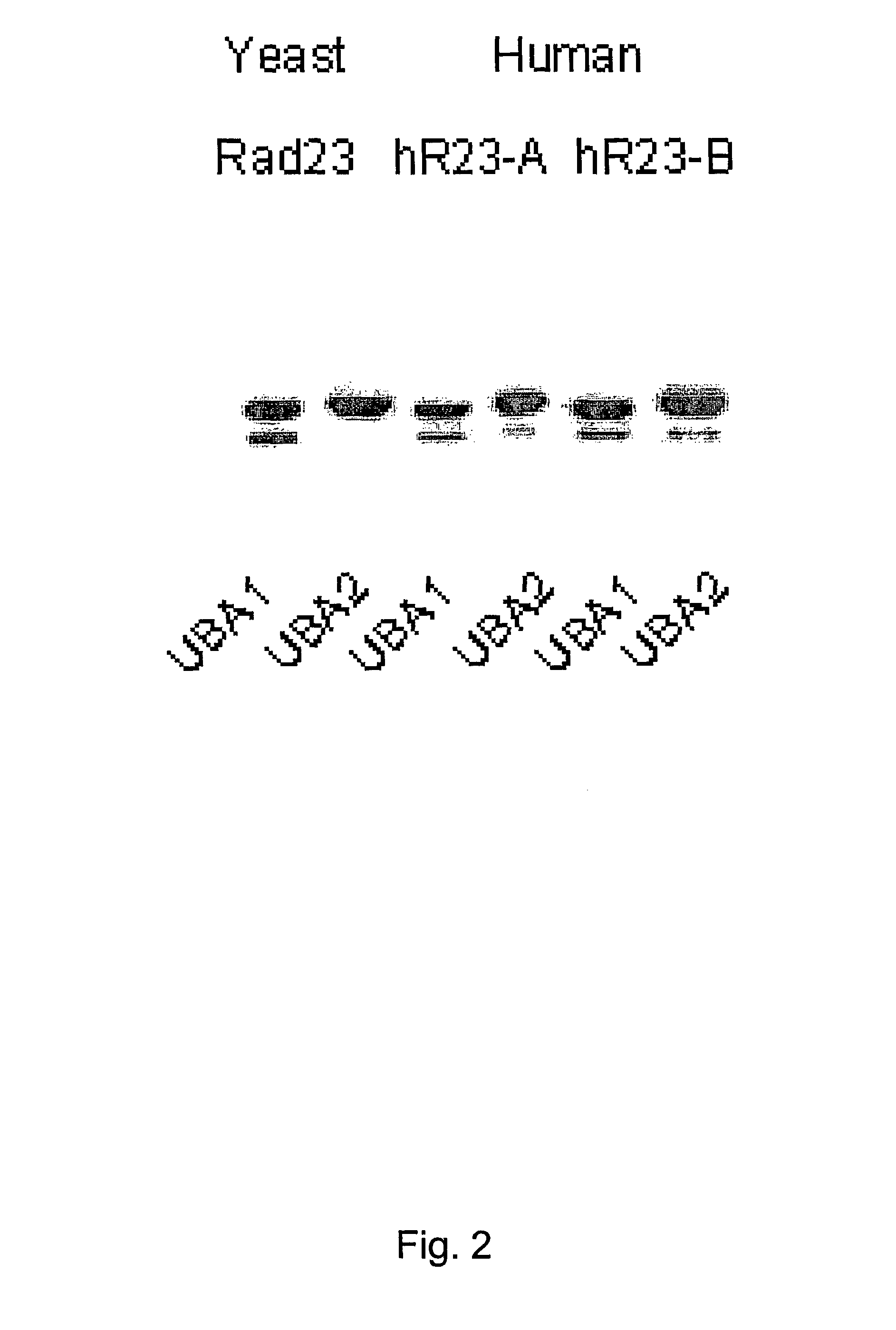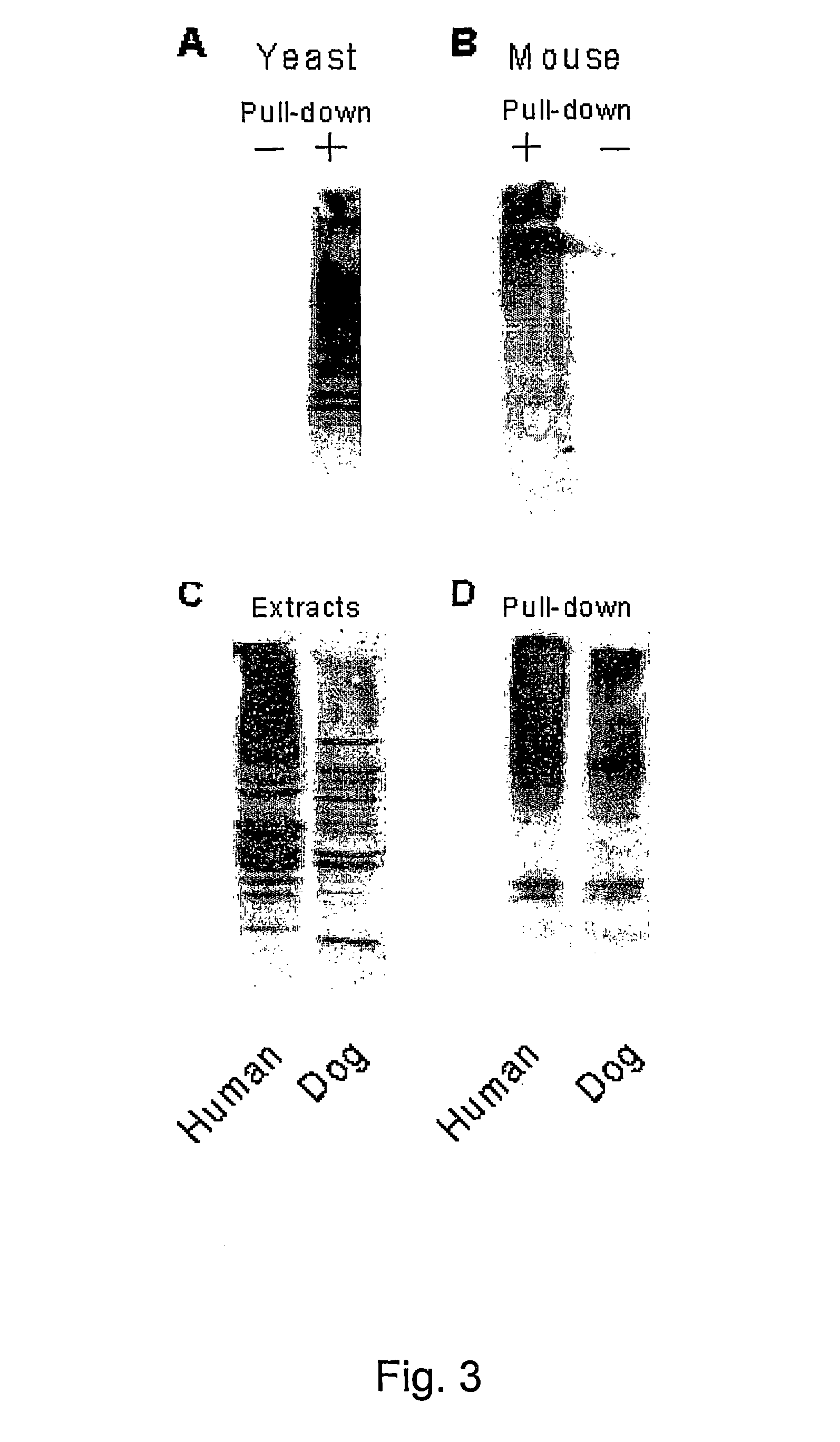Diagnostic methods for ubiquinated protein profiling
a technology of ubiquinated protein and diagnostic methods, applied in the direction of instruments, peptide sources, separation processes, etc., can solve the problems of long duration times of conducting assays, high cost, and inability to selectively examine only those genes with predictive functionality, and achieve high throughput screening
- Summary
- Abstract
- Description
- Claims
- Application Information
AI Technical Summary
Benefits of technology
Problems solved by technology
Method used
Image
Examples
example 1
Materials and Methods
[0107]Yeast strains and plasmids. A bar1Δ mutant was constructed using plasmid pJGSST1, in the haploid yeast strain JD47-13C (provided by Dr. J. Dohmen) (JD47-13C: MATa his3-Δ200 trp1-Δ63 lys2-801 ura3-52 leu2-112). The yeast RAD23 gene was deleted in JD47-13C using plasmid pDG28 (provided by Dr. R. D. Gietz). KMY1188 is an FOA-resistant derivative of this rad23Δ strain. Plasmids encoding Flag-Rad23, and the GST-set of Rad23 fusion proteins were described previously (see, for example, Araki et al. (2001) J. Biol. Chem. 276:18665-18672).
[0108]Protein and immunological methods. Pulse-chase and immunoblotting experiments were performed essentially as described previously (Ortolan et al. (2000) Nat. Cell Biol. 2:601-608 and Clarke et al. (2001) Mol. Cell. Biol. 21:1997-2007, both references specifically incorporated by reference).
[0109]Briefly, exponential-stage yeast cells (˜30 ml volume at A600=1) were washed and suspended in labeling buffer containing 250 μCi 35S...
example 2
Rad23 Can Bind Ubiquitinated Proteins In Vivo
[0125]Human hHR23-B was expressed as a fusion to glutathione S-transferase. Protein extracts were applied to glutathione-SEPHAROSE®, and the proteins bound to GST-hHR23-B were examined in an immunoblot. A significant reaction, that extended from ˜20 kDa to greater than 200 kDa was detected against anti-Ub antibodies (results not shown). These proteins were bound to hHR23-B very tightly, and could only be dissociated by treatment with SDS. No anti-Ub cross-reacting material was detected in a second lane containing only GST. These data demonstrate that human Rad23 binds ubiquitinated proteins that can be recovered following a single affinity step.
PUM
| Property | Measurement | Unit |
|---|---|---|
| volume | aaaaa | aaaaa |
| affinity | aaaaa | aaaaa |
| stability | aaaaa | aaaaa |
Abstract
Description
Claims
Application Information
 Login to View More
Login to View More - R&D
- Intellectual Property
- Life Sciences
- Materials
- Tech Scout
- Unparalleled Data Quality
- Higher Quality Content
- 60% Fewer Hallucinations
Browse by: Latest US Patents, China's latest patents, Technical Efficacy Thesaurus, Application Domain, Technology Topic, Popular Technical Reports.
© 2025 PatSnap. All rights reserved.Legal|Privacy policy|Modern Slavery Act Transparency Statement|Sitemap|About US| Contact US: help@patsnap.com



